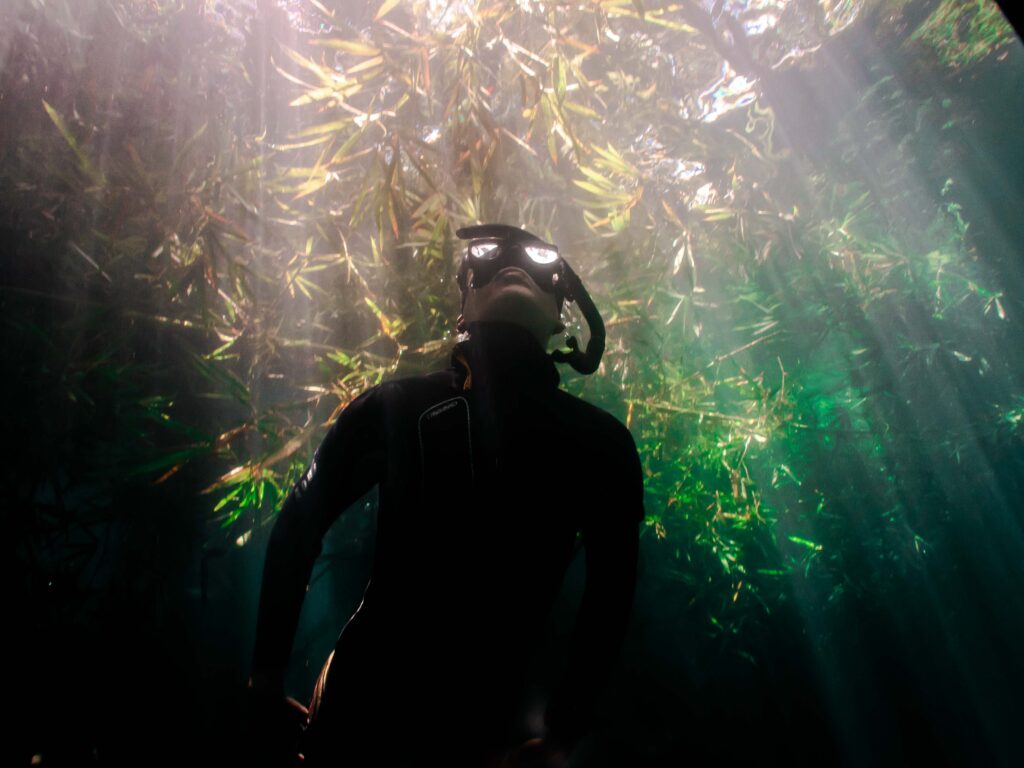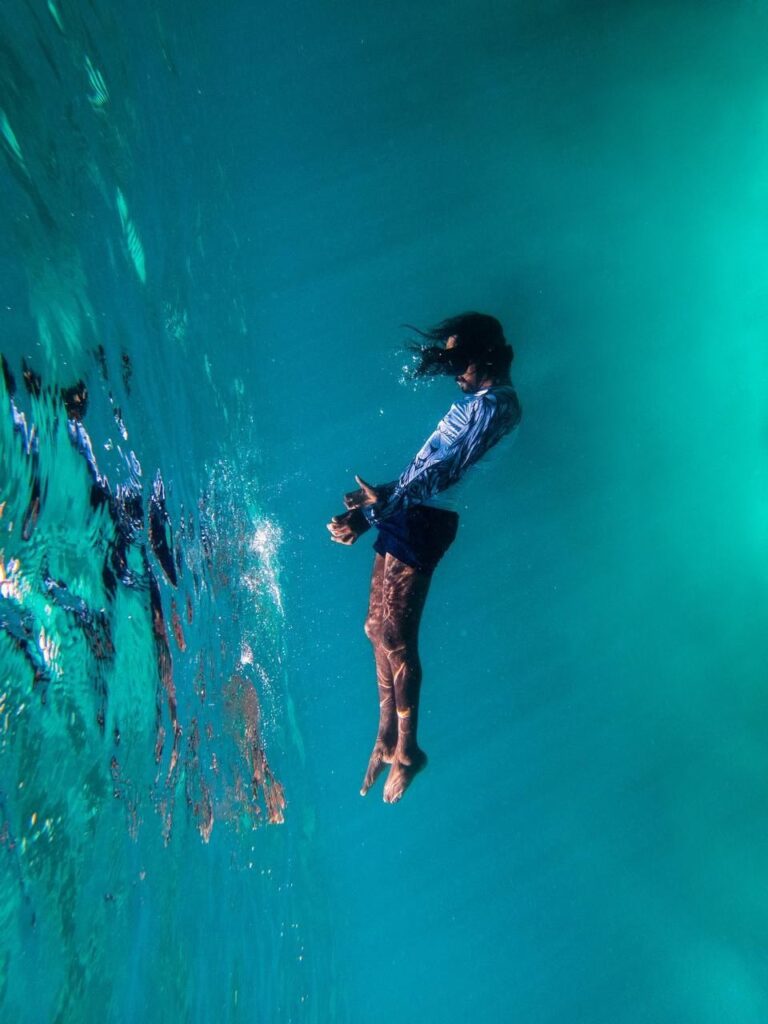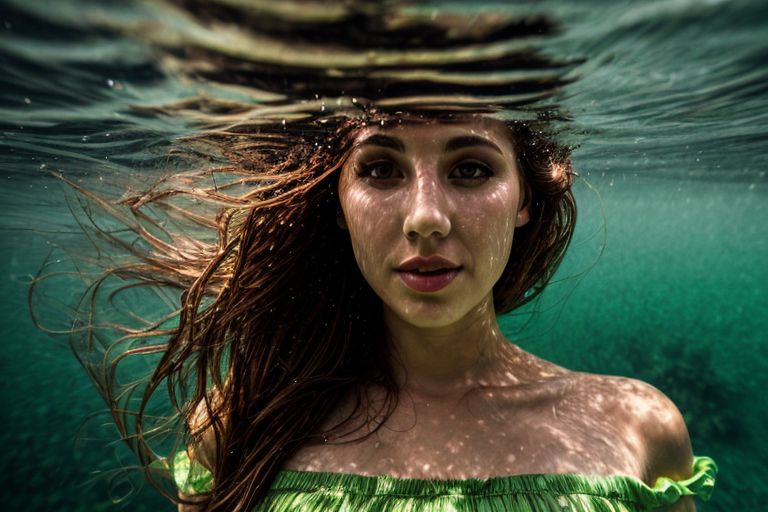A Tale Of Water And AI (Elevating Underwater Photography with AI)
The human form is inherently elegant, and when submerged in water, it takes on a surreal and ethereal quality. The fluidity of movement, the play of light and shadows, and the natural grace that emerges underwater are elements that first got me captivated and embarked me on a journey of underwater photography on breath-holds.
Each underwater portrait session became a dance between the subject and the water. As an underwater photographer, my goal was to capture that fleeting moment of elegance, in a span of a breath-hold, as short as it might be. As an underwater model for other photographers, my goal was to become that fleeting moment of elegance.

The Making Of An Outstanding Underwater Portrait
When it comes to underwater photoshoots, especially for an outstanding portrait, there’s a lot more than meets the eye. First and foremost, you’ve got to have great freediving skills as the photographer, and at least respectful skills as the model. It’s not just about holding your breath; it’s about being comfortable and controlled underwater, knowing your limits, and understanding the aquatic environment.
First you need to think about safety. Safety is paramount underwater, and that’s why you need someone to keep an eye on the model and you while you’re submerged. Having a dedicated safety freediver who’s trained in both freediving and rescue techniques is a must. You want to be able to focus on your craft without worrying about your safety or the safety of your models.
Composition is a whole different ballgame underwater. You have to consider the play of light, buoyancy, the underwater environment, the fluidity of the water, the grace of the model, and the limits of each other’s breath-holds. Usually, we discuss these before even getting in water to see what is possible to achieve, but often once we get in water, some degree of improvisation becomes necessary when the reality of water hits you in the face.
Then comes post-editing, the final piece of the puzzle. The underwater environment can sometimes play tricks with colors and clarity. Shooting in RAW is non-negotiable, and having solid post-processing skills is crucial to bring out the vibrancy and detail in your shots. Whether it’s adjusting white balance, colors, contrast, or enhancing the natural beauty of your subjects, post-editing can make or break an underwater portrait.
In a nutshell, underwater photoshoots are a combination of skill, teamwork, and artistry. It’s not just about clicking a shutter; it’s about creating magic beneath the surface and making it come alive through your lens.

Enter AI, The Future Of Photography
AI generators like Stable Diffusion and Midjourney can be absolute game-changers for underwater photography and can be of great assistance in several ways.
Firstly, by harnessing the power of these AI generators, underwater photographers can brainstorm or refine their composition ideas by experimenting with innovative visual concepts, playing with different light and shadows, and even simulating different water conditions, before actually getting in water for their underwater photoshoots. This can help underwater photographers predict how natural light will interact with the environment, allowing for better preparation and control of the shoot.
Additionally, AI can assist in the post-production phase by enhancing image quality, reducing noise, and even intelligently retouching photos to bring out the best in underwater portraits. While AI won’t be able to turn you or your model into a better freediver, by leveraging AI generators like Stable Diffusion and Midjourney, underwater photographers can take their craft to the next level, creating breathtaking images while minimizing risks and uncertainties, and also make the best out of every breath underwater.

